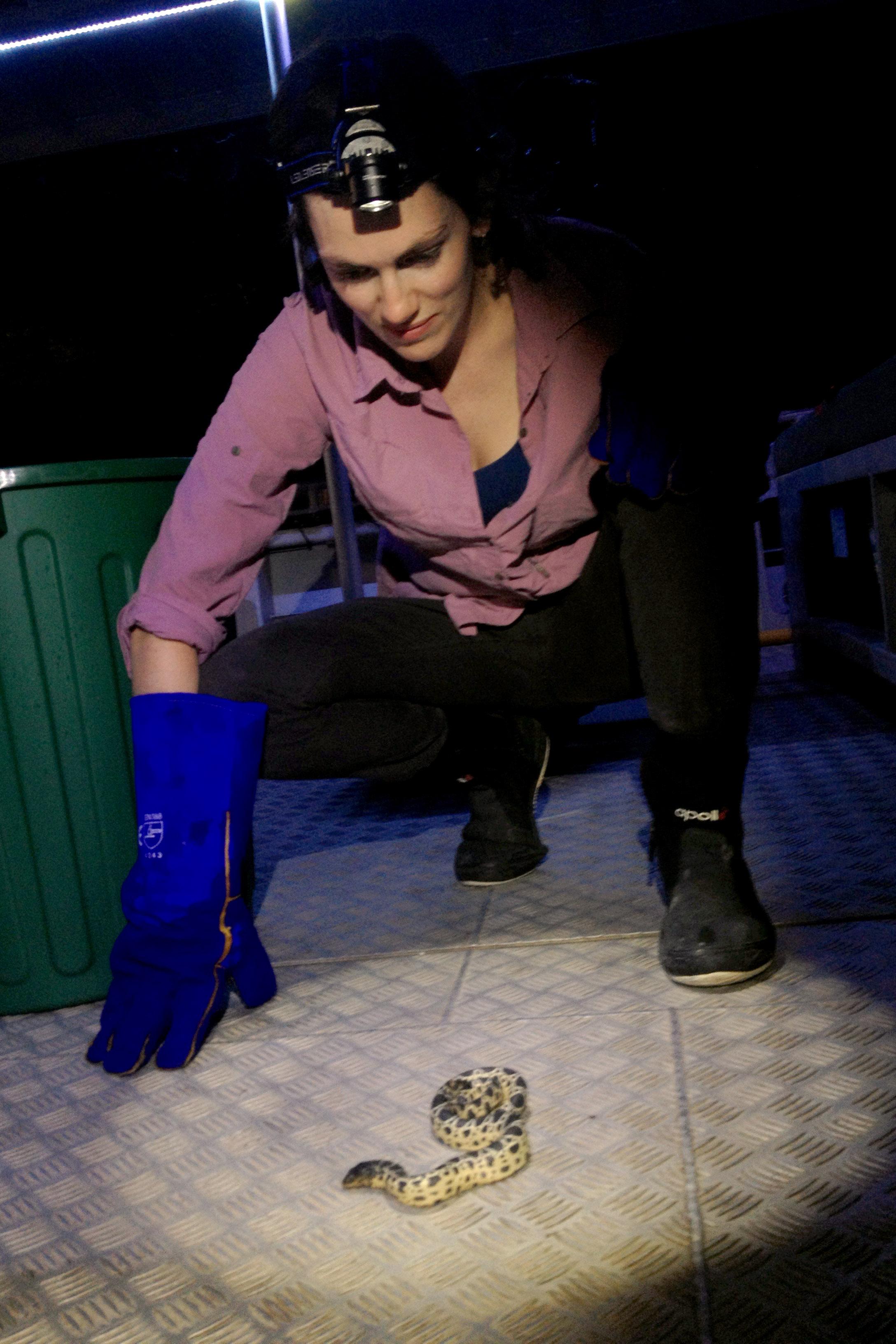Shining a light on sea snake senses

An olive sea snake (Aipysurus laevis) diving underwater. Sea snakes live their entire lives at sea and must come up to the sea surface to breath air. Credit: Chris Malam.
University of Adelaide researchers have discovered that some sea snakes contain genes in their tail skin that help them stay safe from predators.
Marine biologists from the School of Biological Sciences have discovered that in some species of snake, their tail skin contains two interesting genes: one which contains a light-sensitive protein, and another which converts light into information in the nervous system.
As such, olive sea snakes (Aipysurus laevis) and other Aipysurus species, know when to move their paddle-shaped tail away from light. The researchers believe this is an adaptation to keep the tail hidden from sharks and other predators.
Video: An olive sea snake (Aipysurus laevis) hunting on a coral reef. Credit: Graham Edgar, Reef Life Survey
Lead author and PhD candidate Jenna Crowe-Riddell said that sea snakes live their entire lives at sea, swimming with paddle-shaped tails and resting at times during the day under coral or rocky overhangs
“Because sea snakes have long bodies, the tail-paddle benefits from having a light-sense ability of its own,” she says.
“The olive sea snake was the only reptile, out of more than 10,000 reptile species, that was known to respond to light on the skin in this way.”
The researchers tested for light-sensitive tails in eight species of sea snakes but found that only three species had the light-sense ability. They concluded the unique ability probably evolved in the ancestor of just six closely related Australian species.
“There are more than 60 species of sea snake so that’s less than 10% of all sea snakes,” says Ms Crowe-Riddell.
“We don’t know why this rare sense has evolved in just a few Aipysurus species.”

Lead author and PhD candidate Jenna Crowe-Riddell with a baby stokes sea snake (Hydrophis stokesii). Credit: Ruchira Somaweera.
The researchers used RNA sequencing to see what genes are active in the skin of sea snakes. They discovered a gene for a light-sensitive protein called melanopsin, and several genes that are involved in converting light into information in the nervous system.
“Melanopsin is used in a range of genetic pathways that are linked to sensing overall light levels around us. It is even used by some animals, including humans, for regulating sleep cycles and in frogs to change their skin colour as a camouflage,” says Ms Crowe-Riddell.
Lead scientist Dr Kate Sanders said that they confirmed the ability of olive sea snakes to sense light in their tails and found the same ability in two other species.
“We’ve identified a shortlist of genes that are likely to be involved in detecting light. But further study will be needed to target these genes before we can really understand the genetic pathways involved in this fascinating behaviour,” Dr Sanders says.
Published in the journal Molecular Ecology, the study has also produced new insights into the evolution and genetics of this rare light sense.
The research is a collaboration between the University of Adelaide, the University of Bristol, the University of Western Australia and the Natural History Museum, London.
Further reading
Phototactic tails: Evolution and molecular basis of a novel sensory trait in sea snakes, Molecular Ecology
Featured image (news feed): An olive sea snake (Aipysurus laevis) swimming underwater. Credit: Graham Edgar.
